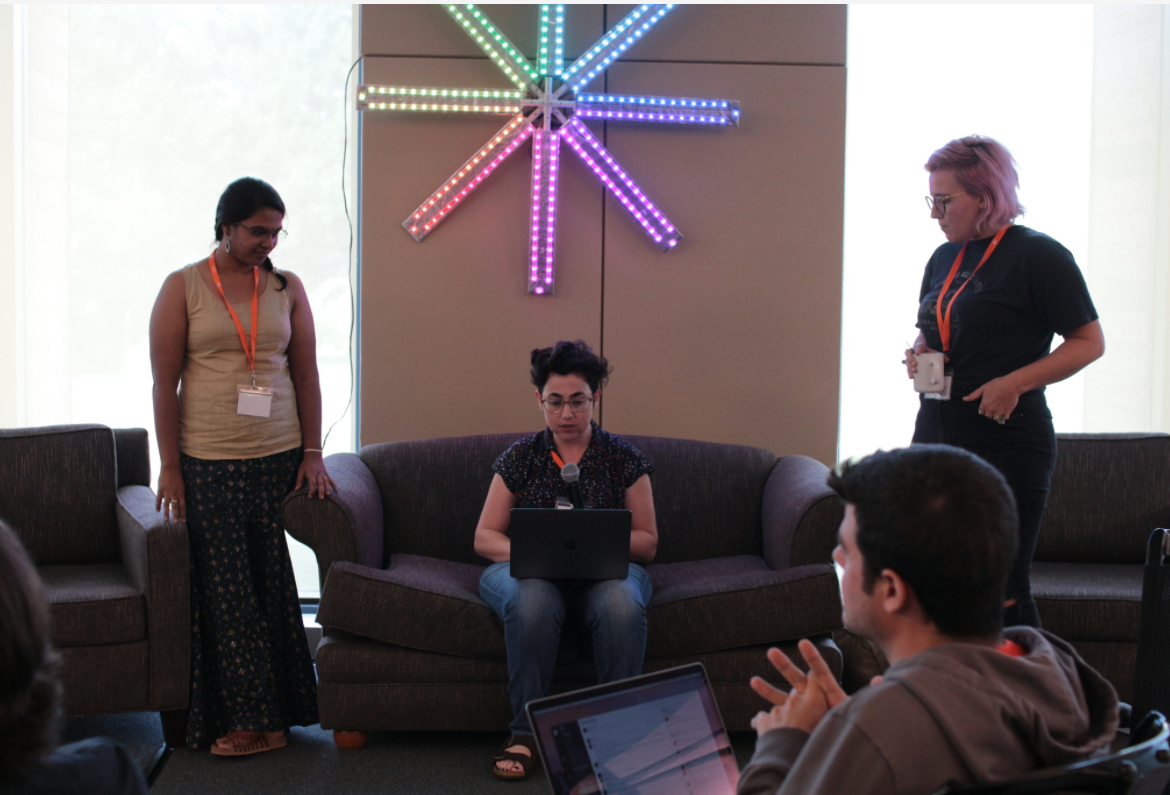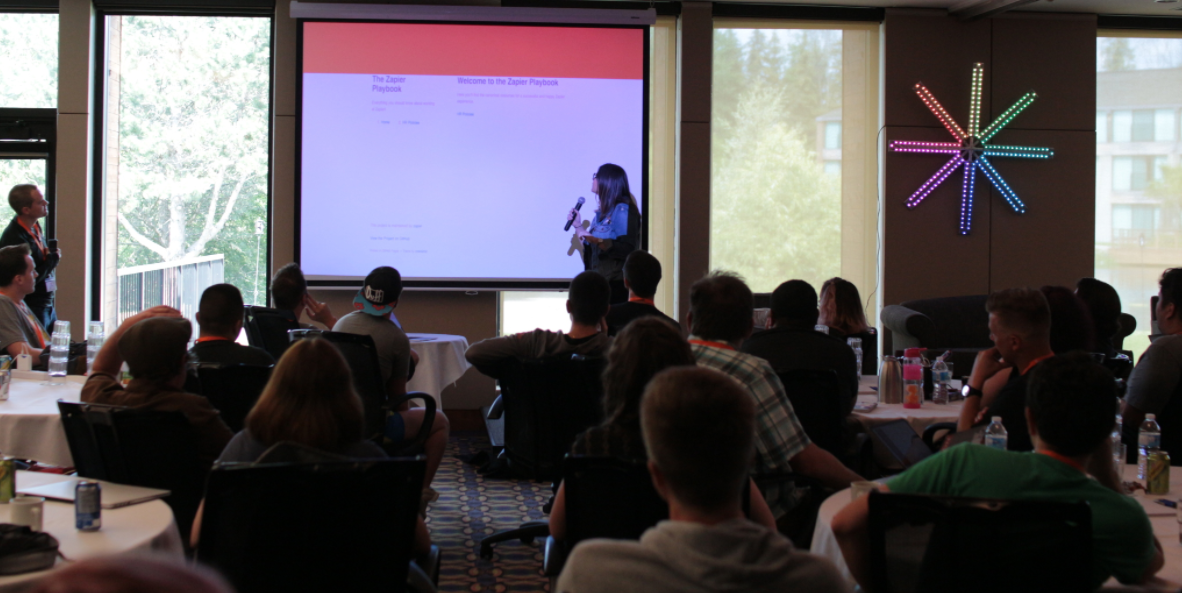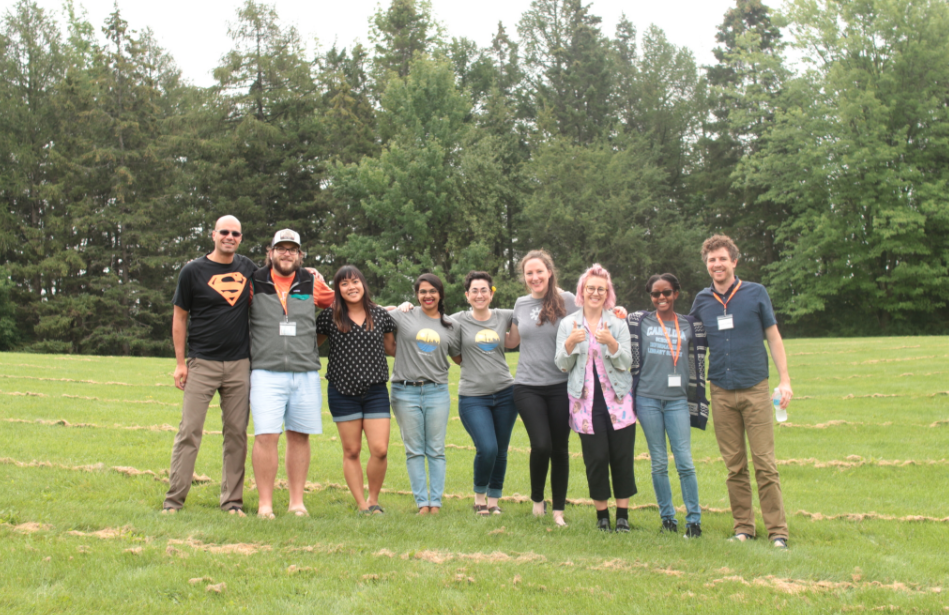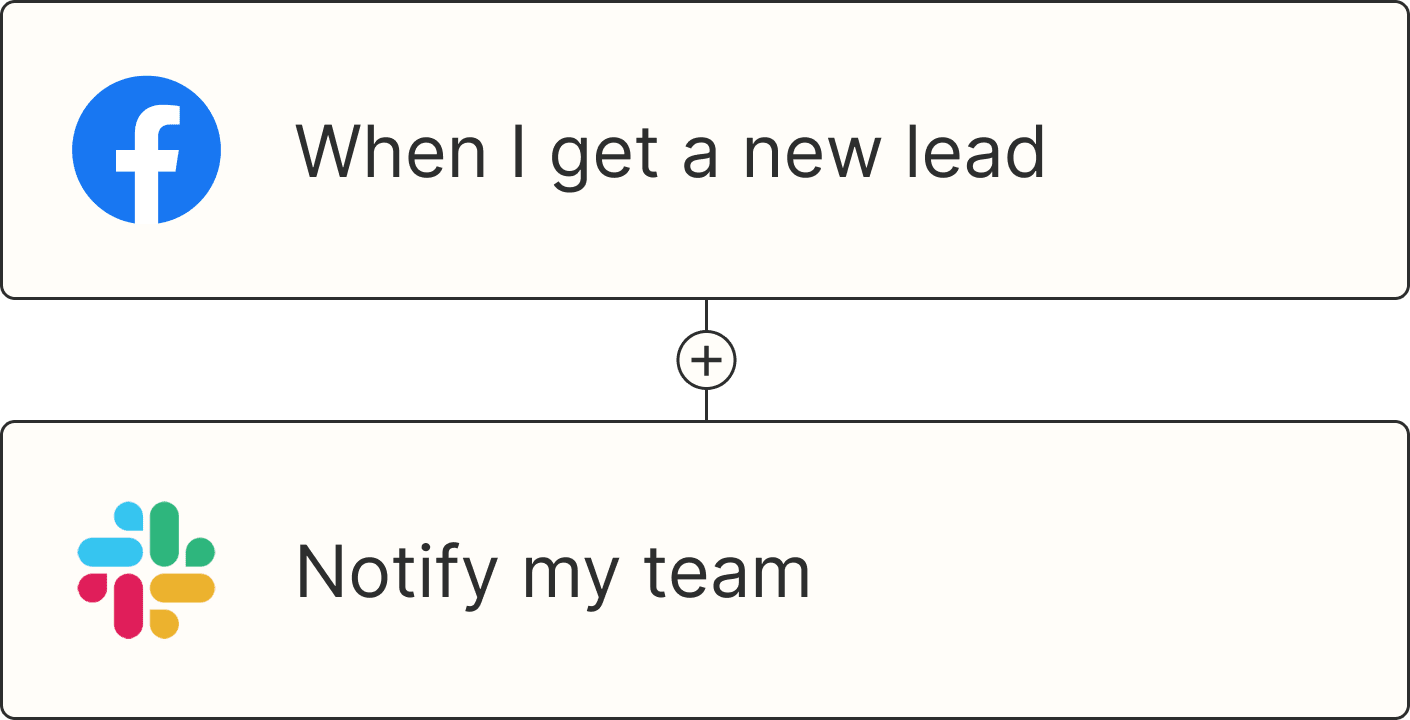Since our beginnings in October 2011, Zapier has grown from three founders cramped in a small apartment to a team of over over 500 folks around the world. Along the way, we've picked up a few tricks (and things to avoid) to make building a remote team easier.
The photos in this chapter are from our team retreats, which we hold every six months for in-person interaction.
Defining characteristics of a top-notch remote worker

Not everyone is cut out for remote work, so before you begin hiring people for a remote position, you'll need to consider the skills it takes to be successful in this type of environment.
Great remote workers have a few traits that make them successful:
Propensity towards action: This is the type of person that, even without a task list given to them, they'll still find something meaningful to do.
Ability to prioritize: Often, important tasks can be unclear when working remotely (especially at a startup). An individual who can focus on the right tasks and knows to ignore less impactful ones will do well.
Proficient writing: Most communication in a remote team happens via text—email, team chat, or one-on-one private messages. If someone struggles to write clearly and concisely, they'll struggle in a remote team. Equally as important is being able to show tact in written communication too. It's all too easy to come off as curt via text. Liberal use of emoji can go a long way.
Trustworthy: If you can't trust the person, then not being able to see them every day is going to cause you to lose sleep. Make sure you trust who you hire.
Local support system: If the only support system someone has is their work one, then being in a remote environment likely won't work for them. You need people who have outside support systems so they have people they can interact with on a daily/weekly basis.
Joel Gascoigne and the team at Buffer have found that people with these traits often come from freelance, contracting, or startup backgrounds. We've certainly found that to be true, too. 10 of our first 13 hires at Zapier had startup or freelance work in their background—and several staff members started out freelancing for Zapier before joining us full-time.
In order to evaluate if candidates you’re considering possess the necessary traits to succeed in a remote work environment, you can use behavioral interviewing, which helps to uncover how people have behaved in previous situations. Here are some examples of questions you might ask.
Propensity towards action
Tell me about a time when you proactively implemented a new or different approach to work at your company.
Tell me about a time when you made a decision with limited information.
Ability to prioritize
Describe a time when you delegated work successfully.
Tell me about a time when you had multiple competing priorities. What did you do?
Proficient writing
Describe a tangible example of methods you use to keep stakeholders updated on the progress of your work.
Describe a time when you were communicating via written communication with someone and they didn’t understand you. What did you do?
Trustworthiness
Provide a tangible example of how you keep your manager informed about what is being done in your work area.
Tell me about a situation when you were honest, despite a potential downside for honesty.
How to write a remote job post

Before you start sourcing candidates, you want to make sure to do a good job at defining the position. Often, companies throw up a generic job opening for a marketer or developer, which doesn't really help the candidate decide if they want to work for your company or not. Since remote companies don't have a local reputation, it's up to you to sell your company just as much as the role.
When it comes to defining the position, the best way to do this is to take the time to understand the work the role is responsible for performing. There are two great approaches you can take to inform yourself.
Shadowing the work
This is a trick that Basecamp uses when hiring for a new role. Jason Fried, the company's co-founder, explained this practice in a Reddit AMA.
When it comes to an all-new position at the company, we like to try to do it first with the people we have so we really understand the work. If you don't understand the work, it's really hard to evaluate someone's abilities. Before we hired our first customer service person, I did just about all the customer service for two years. Before we hired an office manager, David and I mostly split the duties. That really helped us know who would be good when we started talking to people about the job.
Conducting a kick-off meeting
If doing the work isn’t feasible, you can still gather detailed information about a position. Recruiters at Zapier conduct thorough search kick-off meetings with hiring managers, in order to educate themselves about a position they’re hiring for. Recruiters take a deep dive into the following topics during this conversation:
Day in the life: what a typical day entails
Cross-functional partnerships: how the role interacts with colleagues across teams
Contributions: key qualitative or quantitative goals to be achieved
By taking either of these approaches, you'll be able to write a more compelling job description because you will have the necessary information to define how the role relates to the company and its success.
As a result, your job posting will be a detailed listing that explains the ins-and-outs of what you do as a company. This might turn some people away, but those people wouldn't have been a good fit anyway. Instead, you'll get applicants that are much more invested in being a part of your company.
For all our job postings, we want to convey our company culture. So we also post our commitment to applicants, which includes our promise to respond to every candidate, our culture and values, how we have been working on hiring for diversity and inclusivity, and the Zapier code of conduct, which boils down to everyone treating each other professionally and with respect. Putting these out in the open has helped candidates feel more comfortable taking that leap of faith when applying for a job.
One last thing: our Director of Recruiting, JT Haskell, recommends redeveloping your jobs page for SEO related to remote jobs. Most job pages are location-based, and you want to be sure you're attracting remote employees as well. Google provides guidance for how to do this.
How to find remote candidates

It's impossible to hire if you don't have candidates for the role, of course, so the first thing to consider is how people will find out about your open position. Here's where we've had the best luck.
Our networks: People you've worked with in the past are great candidates to join up with you. This is especially true if you enjoyed working with them and want to work with them again. Also ask customers, partners, investors, family, friends, and anyone you think might be helpful if they know of any good candidates. Often, people aren't actively looking for jobs, but they will confide in a friend that they are looking for a new role.
Local meetup groups: It's a bit odd to recommend local recruiting for a remote team, but this has worked out well for us. We're well connected with Missouri dev meetup groups since the founding team has strong ties to the region. Many of the people in the area are excited about Zapier and stay in touch with what we do.
Your own userbase: If you're fortunate enough to have a large userbase that matches the credentials you need, then it can be a great place to recruit from. We do this by adding a "hey, we're hiring!" link in emails that go out to customers and blog readers as well as on our website. This drives dozens of daily applications when we have open positions. Additionally, your users are likely a strong culture fit since they are already more familiar with your company and how you operate.
Your blog: We don't publish positions on our blog, but we still see our increased content efforts pay off in the hiring process. To our surprise, almost every candidate mentions the blog as a reason they want to work at Zapier. In fact, an informal internal survey found that 1 in 10 current team members were led to apply to Zapier through something they read on our blog. Many of our posts are about efficiency, productivity, and working better with the help of apps and automation—and people who are excited about those topics tend to make great remote workers.
Blog posts about your company: Similar to the above, we sometimes write about how we work (like what you're reading right now). The people who connect with how we work get excited enough to search for how they can work alongside us.
Ask teammates to help with sourcing: Some companies take a really aggressive stance and mine every employees' social networks for potential job candidates. We haven't found this to be necessary. Instead, simply ask teammates to help spread the word and with the goal of getting an awesome new teammate. Often, people are excited about working with and helping pick out their new teammate, so including them in the process is a net benefit to all.
Job boards: Job boards can also be a source of candidates. Just be careful about candidates who are looking on job boards for remote work in general—just something that lets them work from home—not your job in particular. But you can occasionally strike gold here.
Share, share, share: Use Twitter, LinkedIn, Facebook, AngelList, and any channel you have access to to let people know that you're hiring. The more spread you can get, the more likely your job post will stumble across the right person's desk.
Sourcing candidates is often a harder task for remote teams than you'd think. Since you don't have global connections, you're a small brand, and local ties can be hard to come by, it can be hard to get the word out about your company and your positions. Take advantage of every channel you can find to get the word out and keep track of where the good candidates come from. Then make sure to utilize those in the future.
How to hire a remote employee
If you've done everything up to this point, then you should start to see applicants roll in. This is where the real challenge starts—it's time to make the hire. First, you'll need to sort through dozens, hundreds, and maybe thousands of applicants to find the person you want. (Fun fact: at Zapier, we average over 1,000 applicants a week for our open roles. We've been lucky to have a great talent pool to choose from.)
Hiring is time-consuming, but it might be the most important thing you do to make sure your team succeeds.
1. Have a value-add application process
Also, in the job posting, ask them to apply in a unique way—don't just ask for resumes. Instead, design a value-add application process that educates candidates about the position while simultaneously educating the interviewing team about the candidate.
For instance, when hiring for our business development position, we included application questions to provide insight about the role's partner duties; the answer to these questions also helped us to understand how candidates would approach key responsibilities. We used the following questions:
Why are you applying for this role? What makes you excited about Zapier?
How would you prioritize these upcoming integrations and why? Office 365, Flickr, Marketo, Wunderlist, Pocket, Ontraport, Hootsuite, and Joomla
How would you get in touch with the following people (don't actually contact them): Editor at Lifehacker, Andrew Warner, CEO of Slack?
And rather than asking for a cover letter upfront, we asked them to write a sample pitch email to a partner.
People excited about your company are willing to complete these extra tasks, often with enjoyment. Those who aren't a good fit just skip your post or forget to do it, turning the unique application process into a filter.
2. Use hiring tools to help create a cohesive recruiting experience
We use the hiring management tool TalentWall, so we can hire collaboratively, maintain transparency throughout the duration of a search, and ensure that candidates are receiving timely check-ins.
We make a commitment to applicants that we will touch base with them at least once per week while they are going through the hiring process; TalentWall makes it easy for a recruiter to see how long it’s been since they last connected with a candidate, which helps us to maintain our commitment.
As a remote team, communication is often asynchronous, so it’s important to create one spot where everyone can easily get on the same page about the health and status of a recruitment process. Using a tool like TalentWall, hiring managers can easily see which candidates are moving along in the interview process, and recruiters and hiring managers can use insights from the tool to identify opportunities to tweak the overall interview process. Talentwall also tracks what happened or will happen with candidate pipelines. This frees up valuable meeting time with hiring teams to focus ahead on challenges and strategy, rather than recapping the past.
You'll also want to use an applicant tracking system (ATS). We use Greenhouse as our ATS, which helps us to create purposeful hiring plans including:
-Interview stages: We establish the interview process before opening up a search. This approach helps us determine what candidates should expect while interviewing with us. -Interview questions: We identify interview questions that’ll help our interviewers determine whether or not candidates are qualified for a position. -Interview scorecards: We determine how to evaluate whether or not a candidate interviews successfully at each stage of the interview process.
We’ve found that creating a thorough interview plan, transparency for hiring teams, and maintaining consistent communication with candidates leads to meaningful interactions, a reduction in bias due to consistent evaluation, and keeps a search moving forward.
3. Invite top candidates to a video call interview
The recruiter, hiring manager, and other teammates reviewing applications select candidates for the next step: a recruiter interview. If the candidates pass that interview, we ask them to the job fit interview, where we use a rubric to score them. For example, when hiring for a Customer Champion, we evaluate candidates using a 1-3 scale for: persistence, knowledge, empathy, attention to detail, and Zapier usage.
In the job fit interview, we get to know the candidate a bit better and ask questions to see if they would succeed in a remote environment. These are best done synchronously, so make the most of your time, and schedule these back-to-back. Doing so helps you more easily compare candidates as well.
Pay special attention to how well the applicant communicates during this part of the process. Effective communication is so key in a remote position that the little things are a sign of a person who might or might not be a great fit. Potential warning signs are individuals who are poor at following up via email, forget when the interview was scheduled, or aren't flexible with an interview time in regards to time zones.
4. Put top candidates to the test with a project
After these video call interviews, a few candidates have likely emerged as the strongest applicants. At this point, we like to put them to the test. Depending on the role, we'll devise a task that is of moderate difficulty and indicative of the types of activities they'll do on a day-to-day basis.
For engineers, that might be using the Zapier Developer Platform to add a new service. For marketing, that may be writing a blog post in collaboration with someone on the team.
If it's obvious that this isn't necessary, we might skip this step, though it's often a good way to get a feel for working together even for great candidates.
More often than not, the task requires the candidate to interact with folks on the team—maybe even more than a couple of times. That way, you'll get a sense of how they communicate and collaborate.
The test should take only a few hours. We want to be cognizant of everyone's time.
5. Check references and make an offer
Before making an offer, we send out an anonymous survey for a reference check using SkillSurvey. That helps get honest feedback on candidates from their references.
Throughout this whole, which takes on average 29 days to hire or 3.5 days to reject an application, we update applicants on the status of their application before making the final hiring call and closing out the job opening.
Have new teammates meet the whole team
Previously, we had candidates meet the team with a short lightning talk on a topic of their choice. Unfortunately, with our now-rapid hiring pace and such a large team, this weekly intro isn't feasible.
New teammates, however, do introduce themselves in their first weekly hangout with the team, sharing where they're from, a bit about their background, and anything fun they want to mention.
More remote hiring resources
One thing you'll note is that we never meet the individual in person during the hiring process. For our first five hires, we did meet candidates in person. We found this was helpful but ultimately wasn't critical. What it did add was cost, coordination headache, and time. If you wanted to interview three people face-to-face, that could take up to two weeks to manage. The first person in the interview process would then be waiting two or three weeks before knowing if they got the job or not. So now we do everything via Zoom and email. This works swimmingly.
If you're interested in how others hire in remote teams, here are how companies we admire do this:
Leo Widrich on how Buffer hires
Gregory Ciotti of Help Scout on how to make hiring less of a headache
Tommy Morgan on how Treehouse hires developers
Alex Turnbull on how Groove hires top talent




